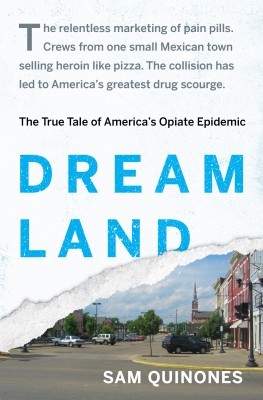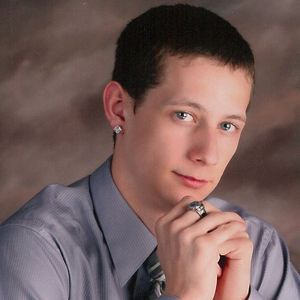Sam Quinones's Blog, page 13
May 7, 2015
Dreamland: A Mother’s Story
I’ve been getting amazing, intense email letters in the two weeks since Dreamland was released. I hope to be adding some of them to my blog. Here’s one.
____
I almost lost my beloved 23-year-old son (he is now 26) to heroin addiction, which had progressed from OxyContin to black tar heroin. We are a family of hard working professionals in a university town.
Like most families, we cherish our kids and do everything we can to help then live an honest successful life. When this happened, my son was a pre-med college student. I was and am very close to him, and he had always been a very good  student and loving son and brother. He was kind, funny, highly gifted, devoted to music and passionate about becoming a doctor. He was also prone to depression at times.
student and loving son and brother. He was kind, funny, highly gifted, devoted to music and passionate about becoming a doctor. He was also prone to depression at times.
When I found out, he was in his 4th year of college, and getting As and Bs in hard science courses such as organic chemistry, but could not seem to manage on his college budget. He kept running out of money. He started having vague physical symptoms, like constipation, malaise and abdominal discomfort. His grades in his last year of college started to slip. At Christmas, we visited my sister’s family in Midwestern farm country. Later, my sister, bless her heart, confided in me that her Oxy pills that had been prescribed for shingles had disappeared from her medicine cabinet when we were staying with her. She was reluctant to tell me as she did not want to make anyone uncomfortable or blame anyone. I am so very grateful that she told me this.
I immediately put together that my son had stolen the pills and had a life-threatening problem. I knew it in my gut to be true beyond any doubt. Perhaps because I am a child of the 60s and knew too many friends who were lost to drug addiction: classmates who were drafted and came back from Vietnam addicted to heroin, and 2 college roommates who went to federal prison for smuggling cocaine as an airline stewardesses. We also have a family history of alcohol abuse and addiction, which my mom told me way too many times.
I freaked out! I knew that he had to be addicted to do something so desperate as steal my sister’s pills. This explained everything – his money problems, dropping grades, and vague feelings of being sick. I could not sleep for fear he would soon be dead. I confronted him in tears and said I knew he had stolen the Oxy. He of course denied it, but finally admitted he had stolen the pills. He admitted he was addicted to Oxy pills, which he had started using after being given a script for narcotic pills after a foot laceration.
I immediately called an addiction doctor I know and, in tears and panicking, offered to pay her anything if she could please help save my son. She drove in from out of town and (at a high hourly rate) met with him and helped him realize he was an addict. She personally went with him to an NA meeting (she is a former cocaine addict and involved in NA). I would have paid anything for any chance to save him.
He went to the NA meeting and started to see addiction therapists, which we paid for, but he remained in denial. He kept saying it wasn’t a big deal and he could kick the habit. He went to some NA sessions, but over the course of 18 months he relapsed 3 times, each time worse than the last. During one of the relapses, he called his father to say goodbye after injecting what he thought was a fatal suicidal dose of black tar heroin in his arm. He had started getting the heroin from a “friend” – a former college football player who had been selling him Oxy and was now selling him heroin once he could no longer afford the street price of Oxy.
His father found him in his apartment unresponsive, but he survived. He was so ashamed that he could not defeat the problem that he said he couldn’t live with the shame and did not find life worth living. We did family interventions and told him we would not give up on him and brought him to more therapists.
He almost died three more times. After the first relapse, I demanded to know his dealer’s name as I wanted to kill him. I traced his phone calls (I was paying for his cell phone) and had repetitive thoughts about killing the demon who sold him the drugs and taught him to inject heroin. I wasn’t sure how I could go on living if I lost him.
When using, he would not see me as he knew that I would know if he was using. So he moved to LA and declined rapidly. His father went to see him and told me that I should go visit him, as he would not be alive long. I did. He looked like a skeleton. He was taking Suboxone, as well as additional narcotics and probably other drugs. I kept saying that I would pay for any addiction therapy he could find, but would never give up on him and not give a penny to his habit. My life was hell.
Thank God, he found an addiction therapist in LA (a former Vietnam vet heroin addict) who he really connected with. He started seeing this therapist while still using. I got a “call” (God how we fear those calls!), but it was not that he had died. It was that he had voluntarily decided to go into “long term” drug rehab. We found an inpatient facility in Utah that the addiction specialist recommended. I knew the enslaving power of heroin addiction and how statistically unlikely it was that he would voluntarily say goodbye to heroin.
I don’t know how he had the strength, but he got on the plane, flew to the University of Utah hospital where he admitted himself into the psych unit for several days of detox. He then voluntarily admitted himself into a Utah inpatient facility for 30 days, then into 90 days sober living, and then underwent 18 more months of therapy and voluntary monitored UAs.
My son is now 35 months completely clean, and is in medical school. He keeps track of every single day he is sober. He says that every day remains hard work. BUT, he has done the work and gotten his life back. He started exercising, working and studying steadily. He took premed courses and passed grueling medical school exams.
My son is now successfully finishing his first year of medical school. He wants to be an addiction doctor and find a way to help others survive this hell.
I still worry about him every day. But we cannot talk about this, as most people do not feel comfortable with the topic. I also need to not jeopardize my son’s career. He tells some people and is doing an internship this summer at rehabilitation clinic. He was open with them when he applied for the position. He answers all questions honestly, but does not bring the topic up with others unless they are very close friends.
I have read every book about addiction that I can get my hands on, and some are excellent, such as “Beautiful Boy.” But no other book so skillfully and adeptly addresses this huge crisis like yours, nor does any other book touch me in terms of what I have lived with like your book.
The post Dreamland: A Mother’s Story appeared first on True Tales: a Reporter's Blog.
May 3, 2015
Xalisco Boys – now in northern Ohio
In case anyone thought the Xalisco Boys – the heroin traffickers from Xalisco, Nayarit, which I write about in Dreamland — were an old  story, there’s this recent bust from the Cleveland and northern Ohio areas.
story, there’s this recent bust from the Cleveland and northern Ohio areas.
The interesting part of this story is that they have apparently moved into the Cleveland market. I know they’re in Columbus, Nashville and Memphis, Indianapolis and elsewhere.
Until recently, apparently, they hadn’t made a move into northern Ohio, which seemed too close to Detroit, another heroin hotspot.
But things change in the underworld, particularly as the Xalisco Boys (delivering black-tar heroin like pizza with drivers and operators standing by) work like a lot of corporations in that they’re always competing with each other and seeking new sales territories.
Never ceases to amaze me how this system evolved and spread like a fast-food franchise – gaining special momentum after it arrived in 1998 in midwestern and Appalachian areas where pain pills were just then being massively over-prescribed.
That was the first example of a heroin distribution system discovering the market inherent in pain-pill overprescribing.
Here goes some of the above cited newspaper story:
“This group utilized numerous men to act as couriers to deliver the heroin to customers. Many of these couriers were brought illegally to the United States from the Nayarit/Tepic area of Mexico to the Painesville area with the promise of working on a farm or in an automobile garage. Once in Ohio, these individuals became couriers for the drug trafficking group, according to court documents and the FBI.”
Tepic is the capital of the state of Nayarit, which is on Mexico’s Pacific Coast. Tepic is a few miles from Xalisco, where this system started and where the guys who started the system are from.
The post Xalisco Boys – now in northern Ohio appeared first on True Tales: a Reporter's Blog.
Another Family Steps Up – D.J. Wolanski RIP
Another family has stepped up to acknowledge in an obituary that a child has died of a heroin overdose.
Daniel Joseph “DJ” Wolanski, of Mahoning County in Ohio, died April 20. Read his obituary.
It must be so difficult for this family to come forward and say this publicly. But this scourge has spread because so many people before them have kept quiet, allowing the rest of us to imagine that the problem really isn’t as bad as it has become.
So it’s important to acknowledge the courage of those who do step up, speak publicly.
The obituary reads….
“Over the course of DJ’s life, he made many bad decisions including experimenting with drugs. Unfortunately, his five year addiction and battle with heroin took over. His family and friends truly loved him and tried everything from being supportive to tough love as he struggled with his own inner demons and heroin. …
“DJ often talked about the growing number of friends that he had lost to this destructive drug and how it destroyed families. They used to say it takes a community to raise a child. Today, we need to say that it takes a community to battle addiction. Someone you know is battling addiction; if your “gut instinct” says something is wrong, it most likely is. Get involved. Do everything within your power to provide help. Don’t believe the logical sounding reasons of where their money is going or why they act so different. Don’t believe them when they say they’re clean.”
Profound words – the way to attack a drug that turns every addict into a silo, a loner wrapped in a cocoon – is through community.
The post Another Family Steps Up – D.J. Wolanski RIP appeared first on True Tales: a Reporter's Blog.
April 30, 2015
Why Pain Pill Addiction? One Nurse’s View
I’m on tour to promote Dreamland, and along the way I’ve have had conversations with parents of addicts, doctors, public health employees, and the public in general.
Often the conversation revolves around why this is a problem, and why it continues to be — if we see that massive  prescribing of pain medication has clearly led to heroin addiction.
prescribing of pain medication has clearly led to heroin addiction.
This letter from a nurse practitioner at a chronic-pain clinic in a mid-sized town in the western United States helps explain.
______
The clinic I work at has a reputation for liberal opioid/opiate prescribing and there is a culture of dependency and codependency that has been instilled by the owner. Prior to coming to this clinic I worked in a psych and drug rehab hospital in a rural part of the United States for five years. I saw all the patients that became addicted first by pain medication or other means. It is a struggle for me everyday to know that I now contribute to this problem.
Every day I try to have the conversation with patients on what it would be like to get off the medication. Most patients tell me no one has ever had that conversation with them. It makes it that more difficult because then I look like the jerk that wants them off their meds when every provider before me told them they would be on pain medication their entire life.
I have developed a reputation as being a terrible provider by many of the clinic’s patients. The front desk asks my medical assistants what it is like working with me since all they hear is terrible things about me.
Many people talk about going after to the doctors to stop this opioid epidemic. The problems I see are patients with terrible insurance that doesn’t cover comprehensive pain management. What I am stuck with is a person with limited resources and a 20-minute appointment and sometimes all I have left is medication. Most of my patients get upset with me, and laugh when I give them breathing exercises to perform.
I don’t start many people on pain medication but I have kept many people on medications that I sometimes don’t feel comfortable prescribing. I go out of my way to try to find alternatives to pain medication for my patients. My hope is that one day pain management is taken out of primary care completely. Pain is too complex to dealt with in a 20-minute appointment.
The other issue is patient satisfaction. That is a huge issue in emergency departments. I have spoken with many ER docs and it seems a lot of the care is driven by customer satisfaction. Doctors fear bad reviews from patients. I think this drives a lot of the pain medication prescriptions in EDs. Because of this, I have seen some of my patients get opioid/opiate prescriptions for relatively minor medical issues.
I have found some positives. Most patients I discharge for multiple violations of their medication agreements never come back. The ones that do often turn out to be my favorite patients. When I don’t worry about prescribing controlled substances with patients then we often get to work on lifestyle changes like better management of their chronic conditions or quitting smoking.
Anyways… I probably have a lot more to say but that seems like enough. Thank you for your time.
The post Why Pain Pill Addiction? One Nurse’s View appeared first on True Tales: a Reporter's Blog.
April 25, 2015
The Normalcy of Addiction
I’m in Little Rock for the Arkansas Literary Festival, a very nice book festival held downtown.
So here’s what happened yesterday. Flew in, met my fellow panelists, learned that Southwest lost my bag, went to the hotel, took a quick nap, went to a festival reception, met someone with an opiate addict in the family (the family member is a woman in her 60s or so).
Little Rock is no different from every other part of the country I’ve visited recently.
Researching our national addiction to pain pills and heroin to write my book, Dreamland, I’ve been struck by the normalcy of addiction nowadays. Everywhere, strike up a conversation, you find someone with a family member or friend or co-worker addicted to opiates.
It’s far more prevalent than crack use was, I believe, and certainly infinitely more deadly.
I remember starting the research, flying to Dallas a couple years ago. On the plane was an elderly couple from rural Oklahoma. We got to talking and before long, they were telling me of their oldest son, addicted to OxyContin.
Not long after that, in a tavern on New Year’s Day in Covington, KY, I met a family, celebrating a young girl’s birthday. Before long, we’re talking about two people in that extended family dead from heroin overdoses.
There are many reasons why this is so.
First: the massive over-prescribing of pain pills nationwide. We often debate whether supply or demand drives drug plagues. This one is supply driven. Pain pills eventually lead to heroin addiction – as the pills are molecularly similar to heroin and much cheaper; in some areas, like those serviced by the Xalisco Boys I write about in Dreamland, heroin is easier and more convenient to obtain the pills.
But this is also driven by silence. There’s no violence to fuel public ire. Meanwhile, though, parents are loathe to talk about their children’s addiction. When they die, they camouflage it in some palatable cause of death. Some parents are going public. But far too few given the huge numbers.
The result is silence, and stories you never hear until you’re sitting next to someone on a plane, or chatting with them at a cocktail party.
The post The Normalcy of Addiction appeared first on True Tales: a Reporter's Blog.



